Herbs that are used for flavour in cooking.
Showing 1–20 of 119 results
-

African Rosemary
Read moreAfrican Rosemary (Eriocephalus africanus) is a woody perennial shrub in the Asteraceae family. It prefers a sunny, dry, well-drained site and is reasonably frost-hardy in most New Zealand regions. Growing to around 80 cm–1 m tall and wide, it has fine silvery foliage and small white flowers followed by fluffy seedheads. Used as a culinary herb in moderation for flavouring meats and teas, a traditional medicinal plant for respiratory and antiseptic uses, and a fragrant, drought-tolerant ornamental that attracts pollinators and adds texture to cottage and herb gardens.
-
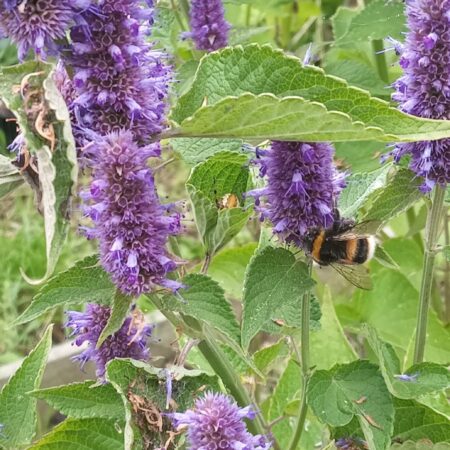
Agastache – Anise Hyssop
$7.50Add to cartAgastache foeniculum (Anise Hyssop) is a perennial in the mint (Lamiaceae) family that grows to 60–120 cm tall and 45–60 cm wide. It prefers full sun and well-drained soils. It has aromatic, anise-scented leaves and dense spikes of violet-blue flowers through summer. Anise Hyssop is used as a culinary herb (fresh leaves in teas, baking, and salads), a medicinal herb (traditionally for digestion and colds), and as a cottage garden and pollinator plant highly attractive to bees and butterflies. Hardy in most NZ climates.
-

Agastache – Fragrant Carpet
$8.50Add to cartAgastache aurantiaca ‘Fragrant Carpet Mix’ is a short-lived perennial in the mint (Lamiaceae) family that grows 30–60 cm tall and wide. It prefers full sun and well-drained soil, tolerating dry conditions once established. This mix produces masses of scented flower spikes in shades of pink, lavender, and apricot above aromatic green foliage. Frost-tender in most of New Zealand, best treated as an annual or protected over winter.
Agastache is used as a culinary herb with edible flowers and leaves adding a sweet anise-mint flavour to teas and salads; as a companion plant it attracts bees, butterflies, and beneficial insects in abundance. Not strictly used as a medicinal herb but is part of the agastaches that have traditional uses for easing coughs and digestive upsets, -

Agastache – Rose Mint
$8.50Add to cartAgastache ‘Rose Mint’ (Agastache pallidiflora ssp. neomexicana) is a perennial in the mint (Lamiaceae) family that grows 45–60 cm tall and wide. It prefers full sun and well-drained soil, tolerating heat and dry conditions once established. It has fragrant green foliage with a minty-anise scent and produces showy spikes of rosy-pink flowers that bloom from summer into autumn, attracting bees and butterflies. Hardy to light frost but best given protection or grown as an annual in cooler parts of New Zealand.
Agastache is used as a culinary herb with edible flowers and aromatic leaves that add minty, anise-like flavour to teas and desserts; not strictly used as a medicinal herb but part of the agastache species that has traditional uses for easing respiratory complaints and digestive discomfort; and as a companion plant it is excellent for drawing in pollinators and beneficial insects. -

Artichoke – Imperial Star
$9.50Add to cartGlobe Artichoke (Cynara cardunculus var. scolymus ‘Imperial Star’) is a perennial in the Asteraceae family that grows in full sun and prefers rich, well-drained soil. It is an early-maturing variety, bred to produce tender edible buds in its first year, and is excellent for both home gardens and kitchen harvests.
-
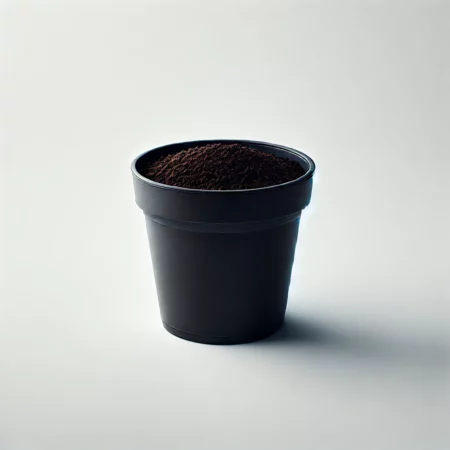
Artichoke – Romanesco
$9.50Add to cartGlobe Artichoke (Cynara cardunculus var. scolymus ‘Romanesco’) is a perennial in the Asteraceae family that grows in full sun and prefers rich, well-drained soil. It is known for its purple-red buds and fine flavour, making it both a decorative and culinary variety.
-

Artichoke – Violet de Provence
$10.50Add to cartGlobe Artichoke (Cynara cardunculus var. scolymus ‘Violet of Provence’) is a perennial in the Asteraceae family that grows in full sun and prefers rich, well-drained soil. It is known for its deep violet buds and tender flesh, making it both a decorative and culinary variety.
-
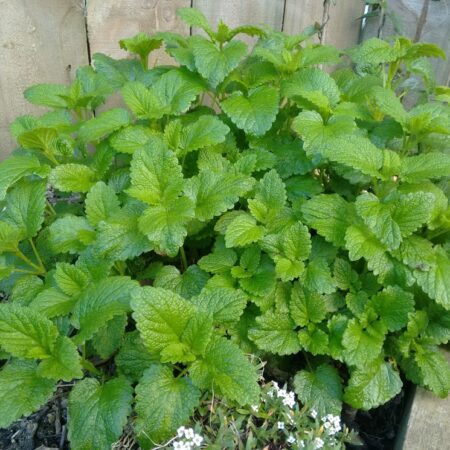
Balm – Lemon Balm
$7.50Add to cartLemon Balm (Melissa officinalis) is a perennial in the Lamiaceae family that grows in full sun to part shade and prefers rich, well-drained soil. It is used as a Culinary Herb for teas and desserts, as a Medicinal Herb for calming and digestive support, and as a Pollinator Plant.
-

Basil – Aristotle
$7.00Add to cartBasil Aristotle (Ocimum basilicum ‘Aristotle’) is a tender annual plant in the Lamiaceae family. It is a dwarf, ball-shaped plant with tiny, aromatic leaves; naturally forms a neat, compact mound. As with all basils, it prefers full sun, regular watering, and well-drained soil.
Use like sweet basil, it has a mild sweet flavour. It is excellent for containers, edging, and fresh picking in the kitchen.
-

Basil – Emerald Towers
$7.50Add to cartSweet Basil ‘Emerald Towers’ (Ocimum basilicum ‘Emerald Towers’) is a tender annual in the Lamiaceae family. It has a tall columnar habit with glossy, dark green leaves; bred for compact vertical growth. Like other basils, it prefers warm, well-draining soil; thrives in pots or garden beds with good sun.
It has a strong, sweet basil flavour ideal for cooking; upright form makes it excellent for small spaces and continuous harvests.
-

Basil – Lemon Towers
$7.00Add to cartLemon Basil ‘Mrs Burns’ (Ocimum × citriodorum ‘Mrs Burns’) is a tender annual in the Lamiaceae family. Upright with medium green leaves and strong lemon scent. As with all basils, it needs warmth, sun, and free-draining soil.
The bright citrus flavour makes it excellent in teas, vinegars, fish dishes, and fruit salads.
-
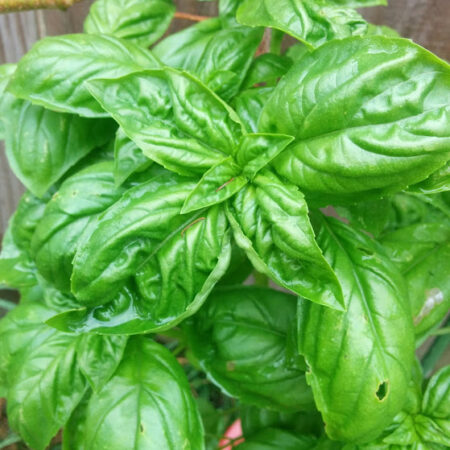
Basil – Sweet Genovese
$7.00Add to cartSweet Basil Sweet Genovese (Ocimum basilicum) s a tender annual in the Lamiaceae family. Compact, leafy plants with medium-large green leaves; pinching tips encourages bushiness.
Prefers fertile, well-drained soil in full sun; protect from frost.The classic Italian basil—sweet, aromatic, perfect for pesto, fresh tomato dishes, and summer salads.
-
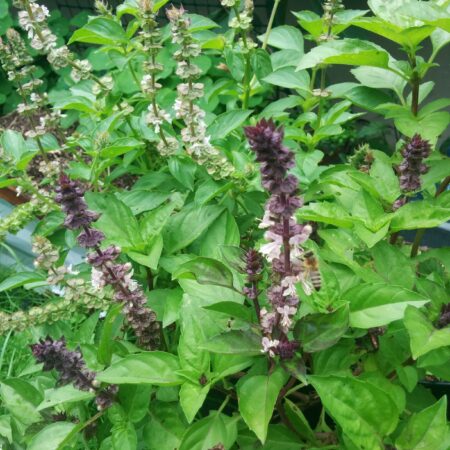
Basil – Thai Towers
$7.50Add to cartBasil, Thai Towers (Ocimum basilicum var. thyrsiflora ‘Thai Towers’) is a tender annual in the Lamiaceae family. It is a tall, columnar growing basil with fragrant green foliage with purple accents. As with all basils it prefers full sun, fertile and free-draining soil.
With the same anise-clove flavour as ‘Siam Queen’ but in a vertical growth form—great for repeated harvesting and small gardens.
-
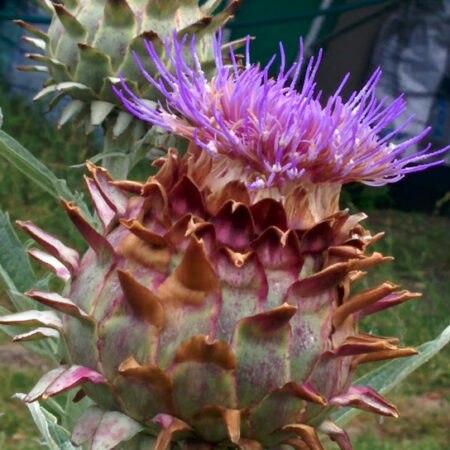
Cardoon
$10.50Add to cartCardoon (Cynara cardunculus) is a perennial in the daisy family (Asteraceae). It prefers full sun and well-drained, fertile soil, and is moderately frost-hardy in most of New Zealand. Growing 1.5–2 m tall and 1 m wide, it features striking silver-grey leaves and tall stalks of purple thistle-like flowers. Mainly valued as a culinary plant for its blanched stems with a mild artichoke flavour, a cottage garden ornamental for bold, architectural form, a pollinator plant attracting bees, and a medicinal herb supporting healthy digestion and liver function.
-

Chilli – various
$6.50Add to cartA variety of the chillies and peppers I am growing from my collection of over 150 varieties. Chillies come in a great variety of colours, shapes, heat levels and taste profiles. Please contact me to see which varieties are on offer this season.
-
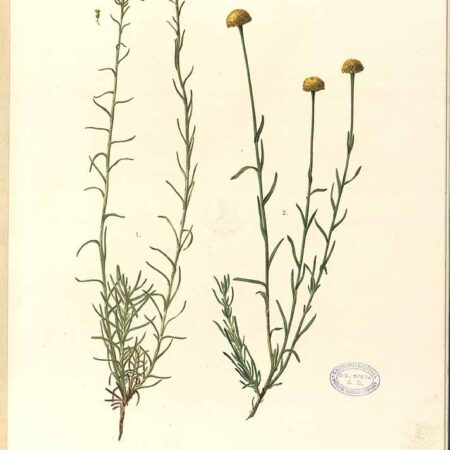
Curry bush
$8.50Add to cartA hardy EVERGREEN SHRUB growing to 60cm (2ft) with silver-green leaves and clusters of yellow button-like flowers. Grow in well-drained soil. It tolerates drought and prefers a full sun position.
Although highly aromatic, smelling strongly of curry mixes, it is rarely used as a condiment, and when used to flavour cooking, is removed before eating. -
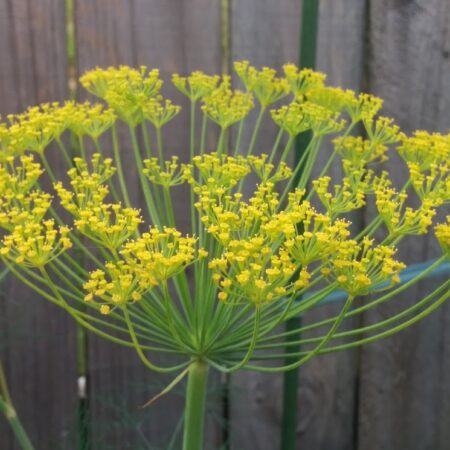
Dill
$6.50Add to cartAn ANNUAL growing to 80cm with slender hollow stems and alternate, finely divided, softly delicate leaves. Small yellow flowers are born in umbels. Prefers a full sun position in a moist and well-drained soil. Edible leaves and seeds, it is also good as a companion plant to attract hoverflies and other predatory insects. Highly nutritious, it has a long history of medicinal use.
-
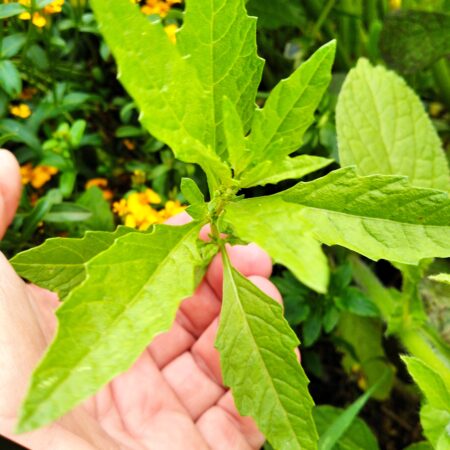
Epazote
$7.50Add to cartEpazote (Dysphania ambrosioides) is a strongly aromatic culinary herb in the Amaranthaceae family, growing 60–100cm tall. It prefers sun and well-drained soil and is best used sparingly in Mexican and Central American cooking, particularly with beans. Traditionally valued for its digestive and medicinal qualities, though large doses can be toxic.
-
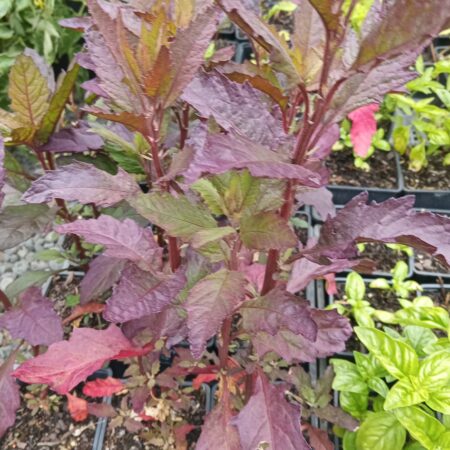
Epazote – Oaxacan Red
$8.50Add to cartEpazote (Dysphania ambrosioides) Oaxacan Red is a strongly aromatic culinary herb in the Amaranthaceae family, growing 60–100cm tall. It prefers sun and well-drained soil and is best used sparingly in Mexican and Central American cooking, particularly with beans. Traditionally valued for its digestive and medicinal qualities, though large doses can be toxic. This red-leaved forms adds ornamental appeal.
-
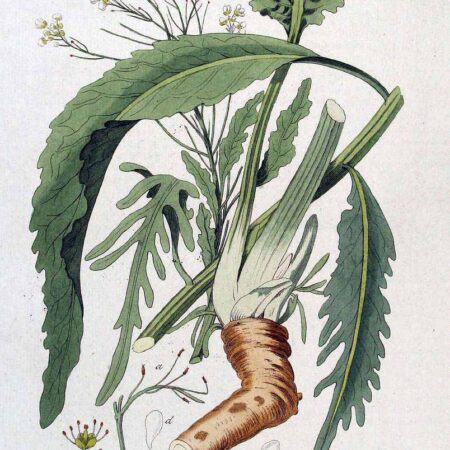
Horseradish
$10.50Add to cartA PERENNIAL of the mustard family growing to 70cm. Prefers a moist and well-drained soil and can grow in very alkaline soils. Full sun or semi-shade.
The young leaves are distinctly different to older leaves, being asymettric spiky before becoming flat and broad.
The plant is cultivated mostly for its large, white, tapered root which is a vegetable and spice. It has medicinal use.
